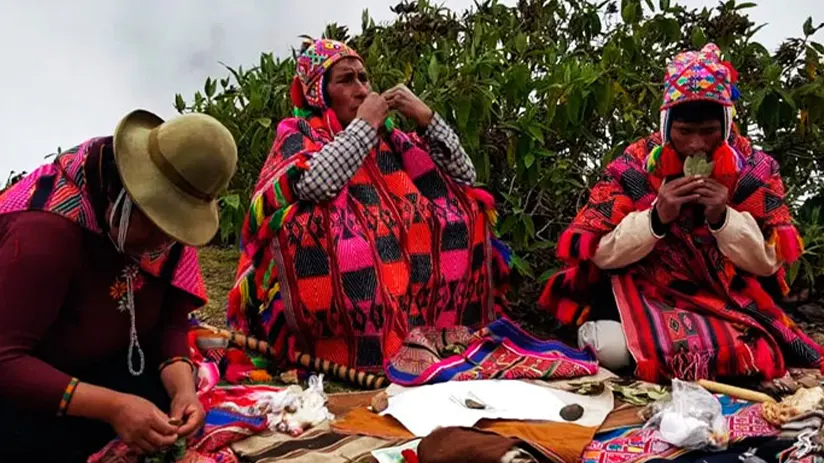Those who wish to visit the magical country of Peru may notice how its inhabitants greatly respect Nature and ecology. Their beliefs and culture are firmly rooted in the syncretism of the Catholic and Inca religions and the Andean worldview. Different influences, such as the Spanish conquerors who arrived centuries ago, have shaped their long-standing customs. Some traditions have persisted for thousands of years despite attempts to replace them with Catholic beliefs.
Offering to Pachamama is one of Peru’s oldest and most sacred rituals, and worth experiencing. We worked with the travel experts at Machu Travel Peru to write a brief article about the female Andean deity. So, when you arrive in the country, you will not be surprised by the many rituals that take place in the surroundings of the attractions.
The main beliefs of the Pachamama before and after the conquerors
- Overview
- Meaning
- In the Inca Times
- In the Colony
- Relevance in present day
- The Andean ritual: Step by step
Overview
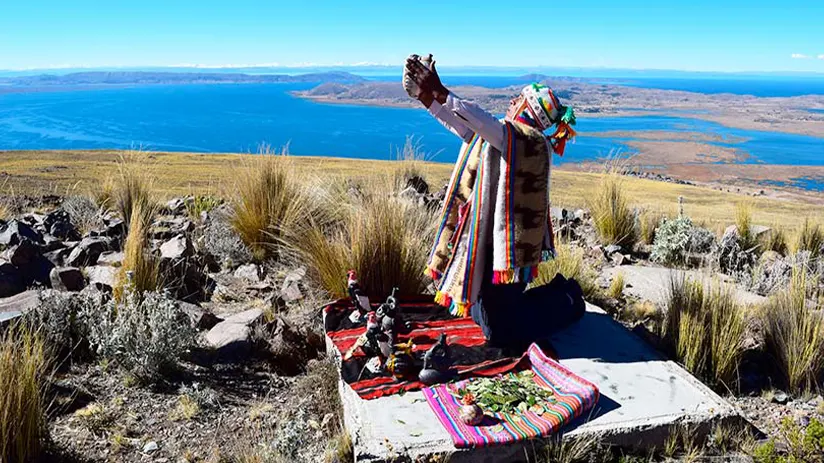
Pachamama is an ancient female deity worshiped by local Andean and Amazonian people. She represented the “mother earth”, who provided food, support, and shelter to her inhabitants (sons). Nowadays, she receives offerings at planting and harvesting times in the Andes, inhabits mountains, causes earthquakes, and is related to fertility. At least, that was the belief of the Incas before the arrival of the Spanish.
So, this deity can be understood as mother earth and nature and its life cycle. In this form, this deity cared about the fertility of the people and the ripening and harvesting of food. She symbolized the earth’s generosity and abundance, using its products to protect her worshippers. Therefore, the Andean Mother Earth concept is generally related to agricultural production.
Regarding current customs, belief in this deity remains valid and thriving. Despite considerable changes due to the growing Catholic faith, worship continues, and adoration is maintained in Andean cities such as Cusco.
Meaning
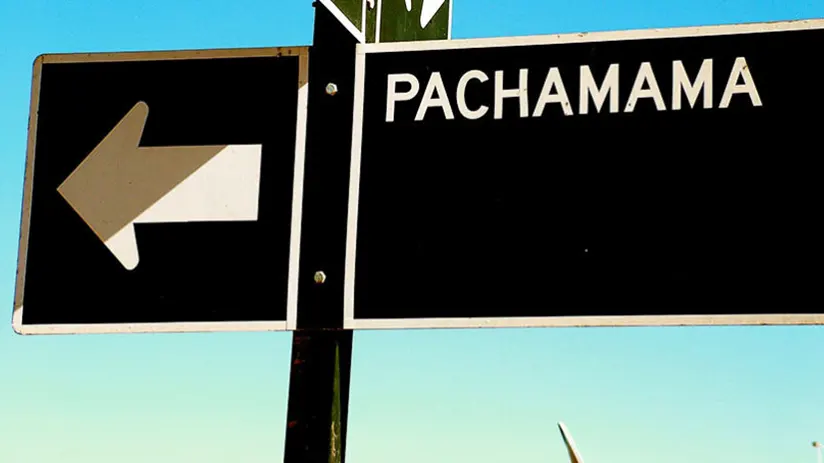
Long before the Incas, the Pachamama was the deity that represented nature in the cultures of ancient Peru. But what was its meaning?
Well, If you wonder what language is spoken in Peru? Spanish is your answer.
But it was not always like that; in the past, the language of the Incas, Quechua, was spoken. Precisely, the Pachamama word translates to Mother Earth from the ancient Quechua language. “Pacha” can be translated into words such as the universe, world, or, more commonly, earth, while “Mama” translates to Mother.
In the Incas times
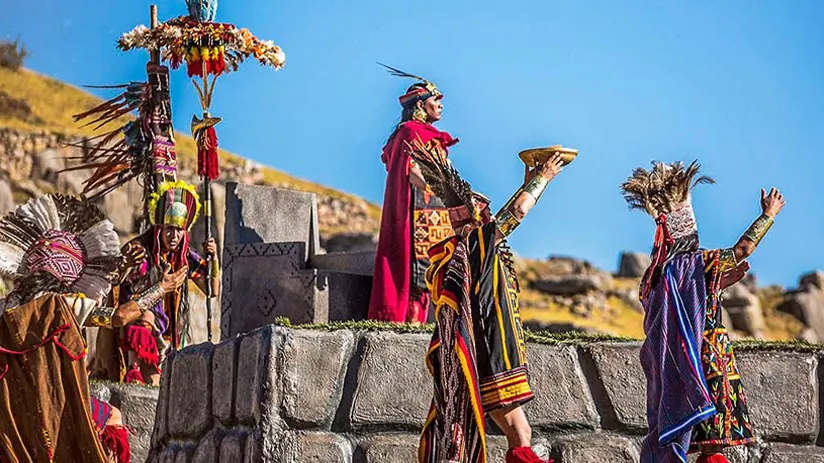
Although the Sun was indeed the main god of the Incas, others gained relevance over time, even more so after the Spanish conquest; the Andean Mother Earth was one of them. The Incas were created by conquering and uniting different pre-Inca cultures, settlements, and villages in the Tawantinsuyo region.
This happened before the 13th century. These cultures and towns had their deities and their ways of worshiping them. In this form, the Incas adopted some of these gods like the Sun (Tiahuanaco pre-Inca culture), and the most important of all, Viracocha god or the doer of everything (worshiped first by the Caral culture, after by the Chavin, following by Wari and Tiahuanaco pre-Incas cultures). Until these days, the oblivion of this last god by the Incas is a mystery, the truth is that they replaced him with one who accompanied them during the day, providing them with heat and energy, a visible god like the Sun.
In this form, With the conquest of the surrounding cultures, the Incas were taking influences and other religious aspects that were later incorporated into their culture in general.
However, the Andean mother earth managed to survive the oblivion subjected to Viracocha and the Sun by the Incas after the Spanish conquest. She was the female soul of nature, which is why the Andean people regarded her as the provider of everything: life, food, animals, water, atmospheric and geological phenomena, and fertility, among other elements of the great biodiversity in Peru.
The entire Inca economy was based on agriculture so that you can understand the importance of Mother Earth in their culture. The Andean mother nature used to be fertilized by the rain and the Sun God, delivering bountiful harvests for her children.
A. Andean Duality
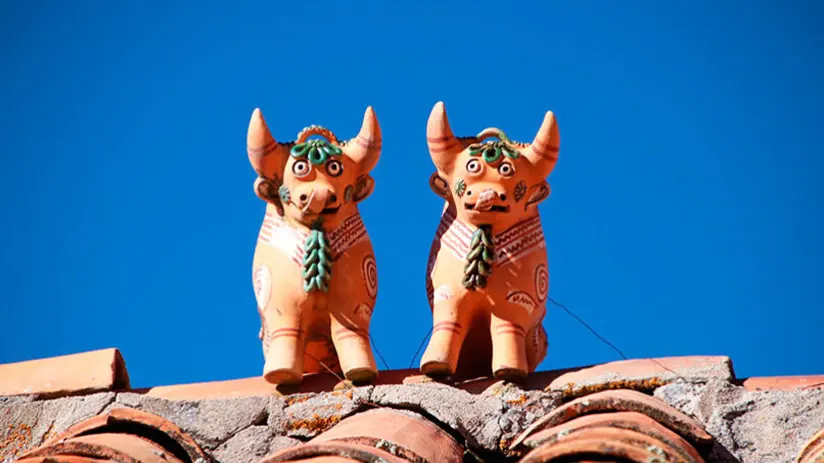
One of the most essential characteristics of the Incas’ worldview was duality. Each female thing had to have her male counterpart. For this reason, they paid tributes in the form of the sacrifice of two offerings (these could be two dead animals, male and female) to obtain her grace and mercy.
Furthermore, each deity had its counterpart. Therefore, the Andean Mother Earth had the Inti (Sun), the water had the fire, and the Kay Pacha (earth world) had Hanna Pacha (heaven world), among others.
Please do not confuse the concepts of good and evil. Because the Incas understood that a god could be merciful and punishing, good and evil could reside in them. But this is another theme.
B. Reciprocity
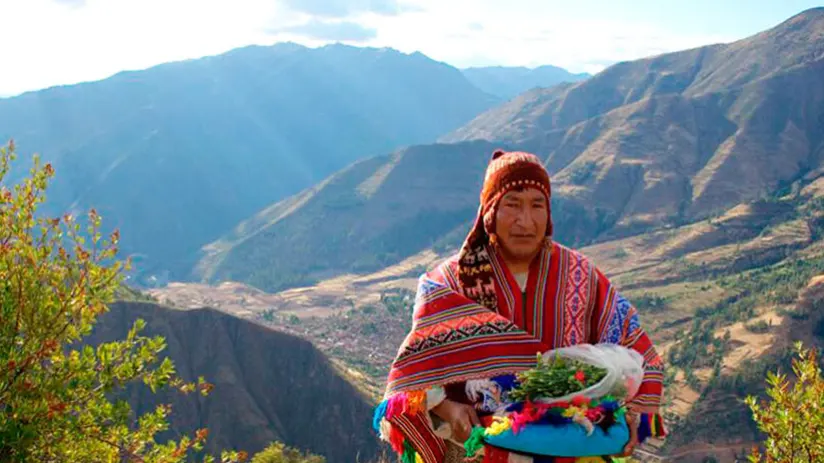
According to some scholars, the Incas had a great sense of reciprocity when making offerings or payments (Challa in the Quechua language) to the Andean mother earth. These offerings consisted of packages full of dry coca leaves, fresh fruits, dry corn, Andean cereals like Kiwicha, Quinua, and more products that the Goddess gave them (you give me and I give you) It was a ritual of reciprocity between the material and the spiritual world.
These wrappers were buried in the same earth but in specific Huacas places. The Huacas were caves or dark sacred places, like mountains or rocks shaped like animals.
In this way, the Andean people gave her the exact products she offered them during harvest times. This ritual was a way of thanking and balancing the relationship between man and nature. So that later, man could take back his crops and fruits of the land.
If you make tourism in Peru, you’ll see this reciprocity in the current Peruvian people. Warm and helpful people, always willing to help foreign tourists.
In the colony
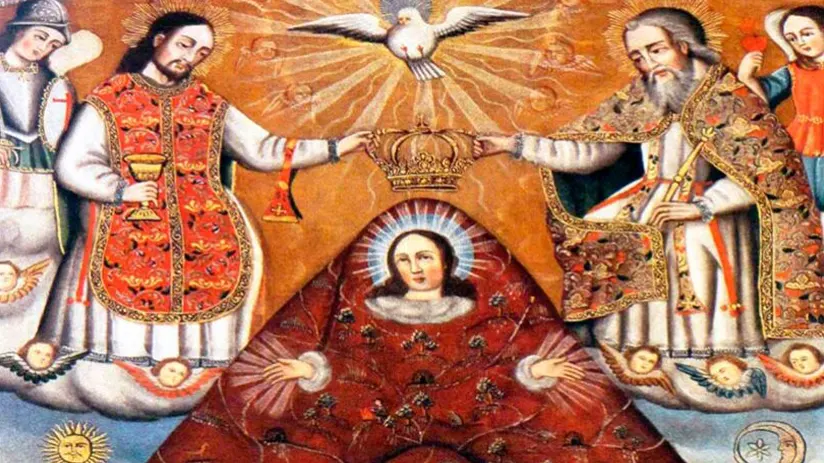
Upon the arrival of the Spaniards conquerors in 1532, they tried to extirpate the pagan Inca religion with violence and punishment and impose, with force and as soon as possible, the Catholic one.
Of course, this was an excuse to dismantle and destroy Incas buildings where gold and silver objects, sheets, and bars dedicated to their Andean gods were situated. European men were very greedy. They took valuable objects, destroyed Inca buildings, and built Catholic churches on top. They did not care about the Inca culture.
This kind of abrupt imposition was not only reflected in the constructions but in the arts, too. The first art masters in the colony were friars, priests, and monks of the religious orders who accompanied the first Spaniards in the Cusco incursion in 1533, such as the Jesuits, Franciscans, and Dominicans. They showed the Inca people how to paint images of the Catholic gods, saints, and virgins for the new churches.
But one religion cannot be erased overnight. Inca apprentices painted virgins with mountain forms and saints with brunette color, all perfectly represented in Andean landscapes. This mix of Catholic figures with Andean elements gave rise to iconographic superimposition, the main characteristic of the Escuela Cusqueña (Cusco School) art style that was born between the XVI and XVIII centuries.
Nowadays, this is a recognized artistic movement around the world. In this form, Mother Earth was the omnipresent deity of the Peruvian Andes (forms of mountains) in the representation of the virgins Mary (their dresses resembled the Andes, mountains, or Apus) in the Escuela Cusqueña paintings.
For this reason, the symbol of the Andean Mother Earth was a hill or mountain in Inca times, and the form of the Virgin Mary in religious iconography from the arrival of the Spanish. Of course, the rituals and offerings to this deity continued to develop throughout the Colony period stealthily, every time, in more hidden Huacas, further away from the Spanish domains, managing to survive his cult through time.
Separate note: You will see these beautiful “Cusco School” paintings collections in museum-like Pedro de Osma in Lima, Religious Art Museum, or the same Cathedral, both located in Cusco.
Relevance in the present day
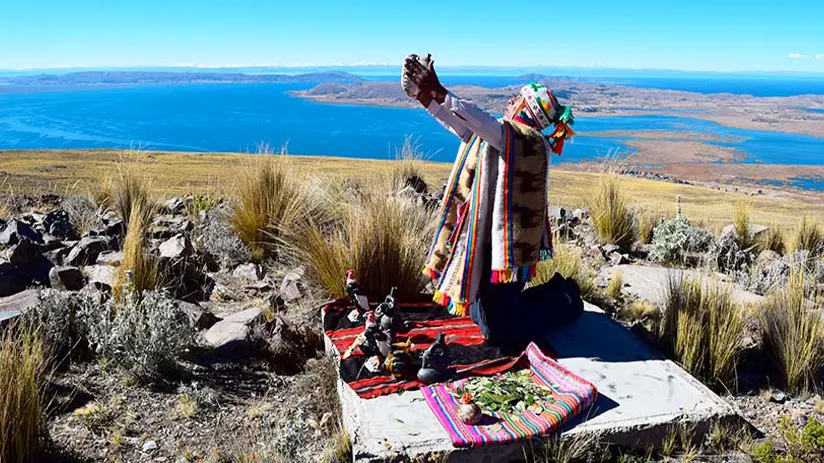
Over the years, the celebrations of Mother Earth have been nurtured with new meanings, concepts, and symbols. But the backbone of the celebration is based on a reciprocity offering that has not changed over the years. Also, it is worth mentioning that the celebrations differ greatly depending on the place and region of Peru, even some rituals, in some areas, precede Peruvian gastronomy fairs in August month.
Furthermore, in some Andean communities, the tradition of burying a clay pot with abundant food inside continues, besides fruits, seeds, coca leaves, Chicha de Jora, and everything else considered necessary are added to the pot. Once the pot (Challa in the Quechua language) is buried, and it is covered with a mound of stones in the form of a little tower, called “Apacheta”.
Usually, these offerings are developed on the first day of August in the Andean highlands and cities of the Peruvian south. August is the winds month when the Incas new year began, according to recent studies. Also, nowadays these rituals are not unique to August, usually, they also take place on the first Friday of each month. Some families do the ritual before going on a trip, before a major purchase, or before starting a major project.
These days, when the planet suffers an apparent and severe ecological crisis, the view of the Incas in nature proves to be one of the best-posed philosophies since many years ago. Therefore, If you are planning a trip to Peru, you should go to Cusco where you can witness these wise ways of the Incas related to the environment.
The Andean ritual, step by step
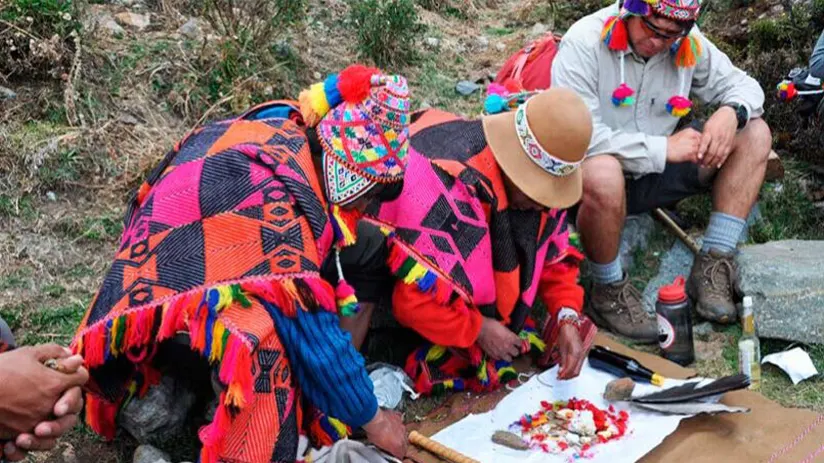
- The day before August 1st is called “la llamada” and is a day to make offerings to a deity. On this day, farms, houses, and orchards are filled with smoke and incense to eliminate evil spirits. It is a way of calling for good energy and chasing away the bad ones. This activity can be done by a common person, the house owner.
- At noon, Shamans (Andean priests) come to the houses to prepare the offerings. These are packages or pots of coca leaves, fruits, corn, wheat, a part of the food that has been prepared for the day, candies, chocolate bars, and goodies. All of them are sprinkled with wine and chicha de Jora (a type of Andean beer made of fermented corn, consumed since Inca times).
- The Shaman prepares the offering in front of the family persons, giving thanks to the Andean Mother Earth and asking for protection, fertility, and other intentions that are related to the family intentions, and goals, in the case of farmers, abundance for the next harvest. During the ritual, each family member thanks Mother Earth and makes a wish, blowing out three coca leaves selected by themselves.
- Then these leaves are given to the Shaman, who will incorporate them into the offering. These three leaves together are called Quintu, in the Quechua language.
- Once finished preparing the offering, the Shaman goes alone to the closest Huaca or an inhospitable place. He digs a well and put the offering there, singing ritual songs in Quechua, burning incense, drinking Chicha de Jora or wine, calling to the Incas gods (Apus), and finally, buries the offering.
- In the afternoon, the shaman shares lunch with the family, as a kind of celebration of the ritual made.
“EARTH WAS CREATED FOR ALL OF US, NOT SOME OF US”
As you can see, the cult of Andean Mother Earth is still very much alive in our time. And, being able to be part of a traditional celebration is an excellent way to get to know the ancestral culture of the Incas. If you want to know more about this magical ritual in our tours in Peru, you can consult with our qualified advisers. Together with Machu Travel Peru, we hope we have satisfied your curiosity. Our team of professionals will be delighted to help you make the trip of your dreams come true. What are you waiting for to start getting to know Peru?
In the same way, if you want to visit some of these places, you can consult Machu Travel Peru to organize a quick guided tour of the place. Our team of qualified consultants will be delighted to organize the trip of your dreams. We can include in your itinerary the visit to some of these incredible museums in Cusco. Do not miss it and start organizing with us from now on!
